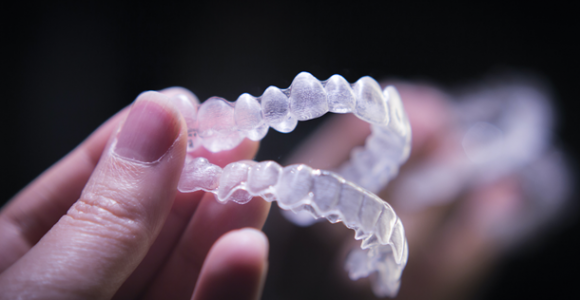Different options for straightening teeth

When it comes to getting braces, patients have their pick of orthodontic care to suit their individual needs and with all the latest modern technology on offer, there is no need for anyone to resort to traditional metal braces to help straighten crooked teeth. Those methods are antiquated, uncomfortable, and take a long time to work whereas some newer methods have been transforming smiles in as little as 4 months (depending on the state of a patient’s teeth to begin with).
The treatments
The host of treatments available to patients may be discussed with an orthodontic specialist at &align Orthodontics or a similar clinic, in order to better determine what would suit them the best. However, the comprehensive list below may give individuals a better understanding of what is available to them before they consult with a professional.
Invisalign – one of the most popular systems to straighten teeth; Invisalign uses a custom set clear aligners that gently push the teeth into position. By using state of the art 3D imaging technology to take a scan of a patients mouth and teeth, the system is able to simulate what a person’s smile would look like at the end of treatment to give them a better idea of what to expect. This technology is also used to create clear aligners custom to each patient for the full course of treatment which they can manage on their own at home without constant trips to the dentist for adjustments. To learn more about Invisalign, talk to your local dental specialist.

Damon – although this system may look like it works the same as traditional braces do, it is in fact much gentler on the teeth and mouth with innovative memory wire technology that does not apply the same pressure as elastics once did. Damon can offer results in a shorter time than traditional braces as well and is a good option for adolescents whose teeth and jaw are still growing.
Lingual braces – this system is a good option for those with severe malocclusions or misaligned teeth but are concerned about how traditional braces may look and affect their daily lives. Lingual braces are fitted onto the back of the teeth so they cannot be seen when speaking and make for a softer aesthetic for those who have concerns over their appearance.
Inman Aligner – this is an ideal appliance to use for front (top and bottom) teeth that protrude more than they should, it is also removable so that eating, sporting activities, and hygiene can be undertaken with the same ease as normal. By applying a gentle squeezing effect to the teeth the aligner is able to push and pull them into position at the same time, making for a relatively quick treatment. After the process is complete patients will receive a retainer to hold the newly straightened teeth in place.
Retainers – these can either be fixed (a thin wire is glued to the back of the front six teeth) or they can be removable but have to be worn at least 16 hours a day. The purpose of both these retainers is to hold the teeth in place once orthodontic treatment is complete so that they do not shift back into the position they were prior to treatment.



